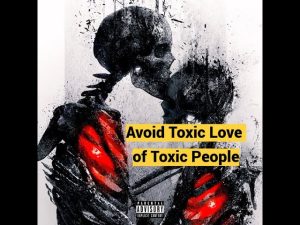Predatory Women (Compilation 2 of 2)
Psychopathic Female Characteristics and Behavior
- Female psychopaths represent a minority of psychopaths and differ from male psychopaths, often exhibiting secondary psychopathy traits such as impulsivity, emotion dysregulation, and emotional overwhelm, including occasional empathy, shame, and guilt. [00:00]
- Female psychopaths create a “crazy making space,” a manipulative relational vortex reminiscent of narcissistic shared fantasy, where they lure and consume people around them for power and manipulation. [07:40]
- Their abuse style is relational and interpersonal, using tactics like smear campaigns, cheating, flirting, and playing various roles (shy, needy, histrionic) to captivate others. [11:05]
- Female psychopaths’ goal is power, much like males, achieved through chaos which they create to destabilize others and assert control, making themselves indispensable. [19:00]
- They operate their manipulations like theater productions, treating people as mere props, rewarding or punishing based on perceived worth, and convert psychopathy into a private religion with no remorse or empathy. [22:00]
- Society’s stereotype of women as weak is exploited by female psychopaths, making them more insidious because defenses toward women are lowered compared to men. [24:20]
- Female psychopaths can simulate emotions and empathy without acting on them, creating emotional distance that enhances their danger. [30:23]
- Their self-actualization is expressed through victimizing and controlling others, similar to a religious cult leader performing human sacrifice metaphorically. [33:50]
Differences Between Narcissistic and Psychopathic Sexuality and Fantasies
- Narcissistic women tend to have grandiose, narrative-driven sexual fantasies with dominant roles reversed compared to narcissistic men, who focus more on submission and feminine roles. [37:12]
- Narcissistic women often engage in extreme BDSM practices and have fantasies involving domination and aggression, whereas narcissistic men have different sexual fantasy dynamics. [40:50]
- High functioning narcissists and psychopaths compartmentalize their deviant sexual activities, which serve as their “nature reserve” where they express true impulses safely without societal repercussions. [44:50]
- Extreme sexual behaviors among high functioning narcissists and psychopaths serve as compensation for their daily lives, often only revealed through sexual practices. [46:50]
Borderline Personality Disorder (BPD): Splitting, Self-Destructive Behaviors, and Substance Abuse
- Splitting is a primitive defense mechanism where the borderline person cannot integrate the good and bad aspects of an object (often mother), leading to alternating idealization and devaluation in relationships. [49:30]
- Narcissists and borderline individuals both employ splitting, but the borderline’s idealization and devaluation relate primarily to abandonment fears, unlike the narcissist’s relationship with narcissistic supply. [53:00]
- Not all borderline individuals self-harm or attempt suicide; however, all borderline individuals are self-destructive in some form including behaviors such as self-trashing through risky sexual encounters, reckless spending, gambling, or driving. [56:50]
- Borderline women often develop psychopathic traits in response to perceived rejection, leading to aggressive and antisocial acts that cause social and legal consequences. [58:50]
- Substance abuse among borderline individuals serves multiple psychological functions: palliative (coping with negative emotions), restorative (self-confidence), disinhibitory (expressing repressed traits), sociability enhancement, and instrumental (goal accomplishment such as acting out). [60:50]
- Substance abuse facilitates dissociation and misattribution of behavior, enabling the borderline person to deny agency for destructive acts often fueled by impulsivity and emotional dysregulation. [64:00]
- Alcohol and drugs manipulate perception and emotional states, contributing to reckless behaviors often leading to relationship destruction and further cycles of emotional instability in borderline individuals. [66:45]
Narcissistic Male Relationship Dynamics and Maternal Figures
- Narcissistic men seek a flawless maternal figure as a savior to realize their grandiose fantasies, but when this figure fails to meet unrealistic expectations, the man devalues her and turns to an “anti-mother,” damaging himself further by reinforcing internalized bad-object beliefs. [70:40]
- The narcissistic relationship cycle is a repeated quest between idealized maternal figures and destructive partners, sustaining their grandiose yet fragile self-concept and continuous suffering. [73:20]
Timings are approximate based on transcript flow.






